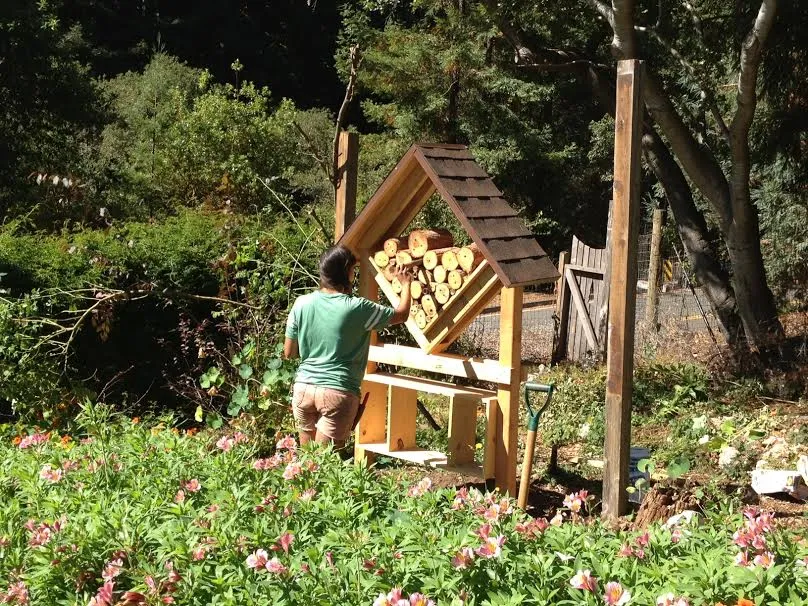A Wild Alternative to the Honey Bee
Photo credit: Studio Variety Group
A WILD ALTERNATIVE TO THE HONEY BEE
The vital role honey bees play in the pollination enterprise is certainly no secret; honey bees are
among the highest valued pollinators in agriculture, and as evident in the last several years, are
dying and disappearing at an astronomical rate due to Colony
Collapse Disorder (CCD). According to the USDA, 42% of all honeybee colonies were lost in
2014 - the second highest rate on record. Given that over a third of all global crops are dependent
on pollinators (not to mention an even larger percentage of crops that are enhanced by bee
activity), entomologists are already on the lookout for alternative pollinators.
WILD BEES
The familiar European honey bee is just one of several thousand species of bees. According to Hamatuhl
Cohen, a PhD Candidate in Environmental Studies at UCSC, wild bees, such as the Blue Orchard Bee
(also known as the Blue Mason Bee), are generally considered more efficient pollinators than honey
bees. They are a native species to the United States that frequent a variety of flowers, making them
suitable for the production of many different crops. Because the European bees are bred for honey
production, some believe that they focus on nectar when foraging, while wild bees might be more
pollen focused, potentially making them even more effective pollinators. The PSU
Extension found that female Blue Orchard bees collect pollen particularly when constructing
nests in order to provide food for bee larvae (pollen is a primary source of protein). They say the
key to substantial pollination on the farm is to promote maximum nesting, given that a wild female
bee can lay up to 30 eggs in a season with adequate resources. In order to recruit and maintain a
wild bee population a consistent pollen source is essential, as well as ample habitat.

Photo credit: Hamutahl Cohen
HABITAT FOR WILD BEES
According to Cohen, 75% of all bees are actually solitary bees; rather than living in colonies they
live independently in ground cavities, hollow reeds, or holes in wood. The “social” honey bee has
been a popular pollinator in the agricultural industry because of both its ease of transportation
and its ability to quickly increase its population by the sounds. Because wild bees are solitary,
the best way to ensure their presence and population growth on a diversified farm is through
adequate habitat. Woodland surroundings are a crucial element to proper habitat for the Blue Orchard
Bee, in addition to having some bare ground accessible for wild bees to nest in. Insect hotels are
also an interesting and easy way to supplement available woodland habitat. They can be made of a
variety of shapes and sizes of natural materials, with little crevices for nesting, and require
virtually no maintenance.
Profitable farming depends on pollinators, and although honey bees can be fun to work with and
bring us a sweet local sugar source, the population is currently experiencing instability. Given
agriculture’s dependence on pollinators, now is the time to turn our attention towards some wild
alternatives. With some basic landscape infrastructure in place to create a welcoming habitat,
fostering and growing a wild bee population is a relatively simple and maintenance free alternative.
For more information check out:
If you liked this article, and want to see more like it, enter your email in the subscribe box to the top-right of this page and we'll send you new blog articles as we publish them.

Jane works as a Field Production Specialist at the Center for Agroecology and Sustainable
Food Systems, where her days are filled with tractor work, irrigation coordination, orchard
care, and educating apprentices and interns. Her favorite way to end a long day's work in
the sun, is running down the hill to Mitchell's Cove and jumping in the Pacific.